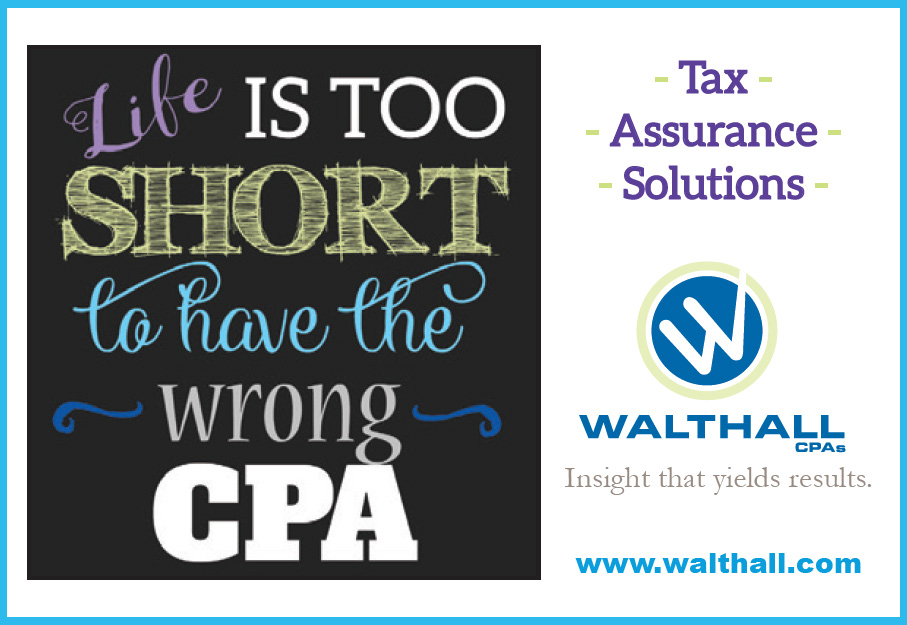By Bruce Bechhold, CPA, Walthall CPAs
After years of keeping the benchmark federal funds rate at historic lows, the Federal Reserve has been raising it gradually. Near-zero rates were an emergency measure. Gradual increases reflect greater confidence in the U.S. economy, but rising rates can affect you as a consumer and investor.
The federal funds rate is the interest rate at which banks lend funds to each other overnight to maintain legally required reserves within the Federal Reserve System. The Federal Open Market Committee sets a target range for the funds rate, usually a 0.25 % spread, and then sets two rates that act as a floor and a ceiling to push the funds rate into that range. The rate may vary slightly from day to day, but it generally stays within the target range. Although the federal funds rate is an internal rate within the Federal Reserve System, it serves as a benchmark for many short-term rates set by banks and can also influence longer-term rates.
The Federal Reserve and the FOMC conduct monetary policies that foster maximum employment and price stability. Adjusting the federal funds rate is one way the central bank can influence economic growth and inflation. In December 2008, the FOMC dropped the federal funds rate to a 0.00% to 0.25% range in an effort to stimulate the economy and generate job growth. Because the economic recovery was slow and inflation remained low, the rate remained until December 2015 when the FOMC raised the target range by 0.25%. There was another 0.25% increase in December 2016, and more increases in 2017.
The FOMC raises the federal funds rate in an effort to slow the economy and hold back inflation, which can rise rapidly when an economy grows too quickly. The Fed has set a 2% annual inflation goal as consistent with healthy economic growth. The prime rate, which commercial banks charge their best customers, is typically tied to the federal funds rate. Though rates can vary, small-business loans, adjustable rate mortgages, home equity lines of credit, auto loans, credit cards, and other forms of consumer credit are often linked to the prime rate. Fed rate hikes might also put upward pressure on interest rates for new fixed-rate home mortgages even though they are not tied directly to the federal funds or the prime rate.
Although rising interest rates make it more expensive for consumers and businesses to borrow, retirees and others who seek income could eventually benefit from higher yields on savings accounts and CDs. However, banks are usually faster to raise rates charged on loans than rates paid on deposits.
Interest rate changes can affect investments, but the impact tends to be more pronounced in the short term. When interest rates rise, the value of existing bonds typically falls. Longer-term bonds tend to fluctuate more than short-term as investors may be reluctant to tie up their money for an extended period if they anticipate higher yields in the future. Rising interest rates should not affect the return on a bond you hold to maturity, but may affect the price of a bond you want to sell on the secondary market before it reaches maturity. Bond funds are subject to the same inflation, interest rate, and credit risks associated with their underlying bonds. Thus, falling bond prices due to rising rates can adversely affect a bond fund’s performance. However, as underlying bonds mature and are replaced by higher-yielding bonds within a rising interest rate environment, the fund’s yield and/or share value could potentially increase over the long term.
Equities may also be affected by rising rates. Stock prices are closely tied to earnings growth, so many corporations stand to benefit from a more robust economy. On the other hand, companies that rely on heavy borrowing will likely face higher costs going forward, which could affect their bottom lines.
The broader market may react when the Fed announces a decision to raise rates or not to raise rates, but any reaction is typically temporary. Fundamentally, what matters is how the economy performs as interest rates adjust. As always, it’s important to maintain a long-term perspective and make sound investment decisions based on your own financial goals, time horizon, and risk tolerance.
























